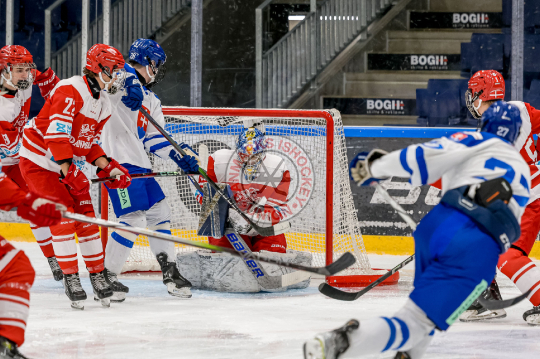Growing up, I experienced the typical British Christmas: marked by opportunist mistletoe-clingers, cracker joke comedians and the havoc wreaked annually upon the charts by ‘The X Factor’. Traditions took a back seat to tinsel and Baileys. In Denmark, however, things are a bit more ‘hygge’.
Origins of the name
The Vikings first encountered Christianity in the 8th and 9th centuries with the arrival of Christian monks and the increase in foreign trade. The first Danish king to convert to Christianity, Harold Blåtand (Harald Bluetooth), was baptised in around 965.
Despite pressure from the church to call Christmas ´Kristmesse´, the Danes kept the term ‘Jul’ – a variation on the name of the historical Germanic peoples´ pagan festival Yule.
Candles, calendars, chocolate
Danish kids are placated until the arrival of Julemanden – like children across the world – by bribing them with chocolate in calendars during
Advent.
Additionally, Denmark’s love of candles takes on an even bigger dimension at Christmas, as each house has an Advent candle with the days until Christmas marked on it. The candle is lit each day to burn it down to the next day’s date.
While advent wreaths of evergreen twigs and ribbons hold four candles – one is lit on each of the four Sundays preceding Christmas.
Keep the elves nice with rice
As if excitable children surrounded by chocolate and lit candles aren’t enough, the Scandinavian Christmas tradition has taken the idea of Santa’s helpers or elves and come up with ‘nisser’. These are devious, naughty elfin or pixie-like creatures dressed in grey trousers and red hats.
As they have yet to be immortalised in a Will Ferrell follow-up to ‘Elf’ or feature in a ‘Home Alone’ film, Danish folklore suggests that children leave out bowls of risengrød for them, the sweet rice pudding eaten throughout Jul. It certainly beats fuelling Santa’s alcoholism with sherry or brandy and encouraging sleighing under the influence.
Feeling the Xmas spirits
Denmark being Denmark though, a beer is never far away.
But Danes cannot drink with beer alone – Jul is also a time for Denmark’s take on mulled wine, gløgg. It includes the Christmas spices we’re familiar with, but also dried fruits and almonds.
Alcoholic Christmas smoothie, anyone? Aalborg Akvavit’s limited Jule edition bottles are individually numbered and changed in design every year. Collectors around the world try and secure one of each design – although the contents are just as appealing as the bottle itself.
Nation’s sweet tooth
From Christmas lunch parties of smørrebrød to the Christmas Eve dinner, food is a crucial part of Jul in Denmark. Bakeries and shops will stock sweets and cakes in the weeks leading up to Christmas and often create elaborate window displays to showcase their skills. Treats enjoyed throughout Denmark include the deep-fried lemony klejner, nutty gingerbread brunkager and tiny spiced biscuits called
pebernødder.
Traditionally on Christmas Eve, roast duck, pork or goose takes centre stage and is served with caramelised potatoes, braised red cabbage and a variety of pickled side dishes.
This is followed by ris a l’amande – a mix of sweet rice pudding, whipped cream and crushed almonds. It’s often served with a sauce made from winter berries, sometimes collected by children whilst out walking. A whole almond is hidden in the pudding, and the person who finds it wins the mandelgave, a gift purchased for the occasion.
Glee around the tree
Denmark makes Christmas itself a multi-day affair. Lille Juleaften, or ‘Little Christmas Eve’, is on the 23rd and begins the festive period with a family dinner. The decorating of the Christmas isn’t completed until Christmas Eve – whilst everything else is prepared in the weeks leading up to Christmas, this important aspect waits until the 24th.
Because Christmas isn’t Christmas without some unnecessary stress about burnt meat and cold potatoes, the final decorating tends to happen at the same time as the main Christmas dinner being cooked. Whether by happy accident or cunning design, the children and pets can play with decorations and tinsel whilst the adults carry on with sneaking the best bits of food before it even hits the
table.
Following the Christmas dinner, everyone holds hands and dances around the tree singing traditional songs including ‘Nu Er Det Jul Igen’ (Now It’s Christmas Again) and the modern classic MC Einar’s ‘Jul – Det’ Cool’.
The 25th and 26th are quiet days spent at home with more food, friends and family, recovering from the excesses of the previous days and looking forward to the party starting again at New Year. It’s good to know that wherever you are, some things don’t change.












